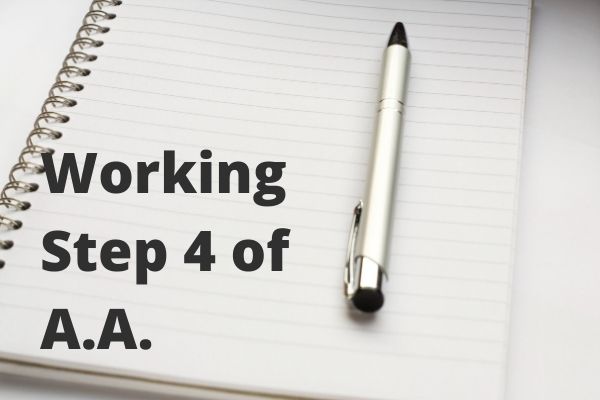Beating your drug or alcohol addiction is not easy, but choosing the right facility can make all the difference. The question then becomes: how do you pick one? There are over 14,000 addiction treatment centers in the United States which can vary by the types of treatments, programs, or facilities they offer. There’s so much at stake that deciding which rehab to go to is not something that should be done lightly. Here are 3 important factors to consider when choosing between addiction treatment centers.
Location
Your first thought may be to search for an addiction treatment center near you. You’re ready to get clean ASAP so you look for rehab facilities that are close by. There are certainly benefits to staying local – being close to loved ones, saving on travel costs, you might even be able to continue going to work – however, these conveniences might actually hinder your recovery.
Local vs Going Away
Just as you have the freedom to choose to check yourself into rehab, you have the freedom to leave even if your program is incomplete. Anxiety, cravings, or a false sense of recovery can cause patients to leave rehab early. Being in a city you know with plenty of resources at your disposal (your own car, knowledge of public transport, or nearby friends that could pick you up) makes giving into temptation easy, and the option to abandon their treatment easily accessible.
Urban vs Rural Setting
For this reason, many addicts opt to travel out-of-state for treatment. But don’t simply sign on for scenic views or exotic locations. It’s important to consider what environment you’re going into. Swapping one fast-paced city for another may still be familiar enough to tempt you astray making a peaceful, remote location a better choice. On the other hand, if boredom in a small town is what drove you to abuse drugs in the first place, perhaps a bustling metropolis with lots of options of sober activities to partake in might prove more helpful to your recovery.
Types of Treatment Available
Once you’ve narrowed down the setting and place where you’d like to undergo addiction treatment, there’s the matter of finding the type of treatment that’s best for you. Inpatient, outpatient, or perhaps as a mix of both? This will depend on the severity of your addiction. You may require intensive care or be just fine with only a few weeks of therapy. In addition, you may need or want medical intervention to mitigate detox or withdrawal side effects, which not all facilities offer. It can be impossible to self-diagnose how serious your own addiction is. Fortunately, most addiction treatment centers conduct an evaluation to determine the level of care you need.
Detox
This is the most intensive type of addiction treatment available. In detox, patients receive 24/7 care tailored to the specific needs of the first days of recovery. Detox facilities often incorporate some form of medically assisted treatment to help manage symptoms and others also incorporate alternative therapies. Detox may last anywhere from a few days to 2 weeks depending on the patient’s needs.
Inpatient/Residential Treatment
After detox, the patient may move to a long term residential program where they live on the premises and receive 24-hour care which often includes medical treatment such as detoxing, along with therapy-based counseling. The length of these types of programs can vary greatly, ranging from 6 months to a year or a shorter-term stay of 3 to 6 weeks. Naturally, this is the most expensive type of addiction treatment which will also influence whether intensive inpatient treatment is a viable option.
Partial Hospitalization Program (PHP)
Partial hospitalization provides comparable levels of attentive care as inpatient treatment would. The primary difference is that in PHP the patient does not live on the premises. They will likely live in a sober home or halfway house during this stage of treatment. Other than that there is still a considerable amount of psychiatric support in addition to behavioral therapy. This is often the next step in the recovery journey as a patient transitions from 24-hour inpatient care to outpatient. Many of the support in this stage focus on addressing causes of addiction developing healthy coping mechanisms.
Outpatient Treatment
Designed to help recovering addicts transition back to their normal life, fully outpatient treatment is the least intense. This is for individuals who are ready to transition back to normal life, while still finding time to reflect on their recovery. It typically entails a few hours of therapy each week but allows the person a significant level of freedom, allowing them to return to work as normal or simply pursue other activities. This is often the final stage of the recovery process but is also sometimes used for those who cannot commit to higher levels of care.
Your Mental Health
If you have a pre-existing mental health disorder, you should seek addiction treatment centers that specialize in the simultaneous treatment of psychological and substance abuse disorders. These types of programs are called Dual Diagnosis Treatment. They have become much more prevalent in modern addiction treatment as more and more research has shown that mental disorders play a significant role in addiction.
No matter which came first, if some sort of psychiatric illness is present alongside substance abuse, it falls under this diagnosis. Depression, anxiety, and bipolar disorder are a few of the most common disorders that frequently coincide with drug abuse. One often influences the other and can be so intertwined that it’s impossible to effectively treat addiction without addressing the role the mental illness has played.
Learn More About Addiction Treatment Centers
Not all addiction treatment centers are equal – in fact, they can be the difference between life and death. The facility you choose will be responsible for both your physical and mental well-being in addition to the overarching goal of long-term addiction recovery. The facility you choose may need to attend to your immediate health risks via medical detox, be able to get you through the initial unpleasantness of withdrawal, and stay by your side to help you manage any remaining cravings.









